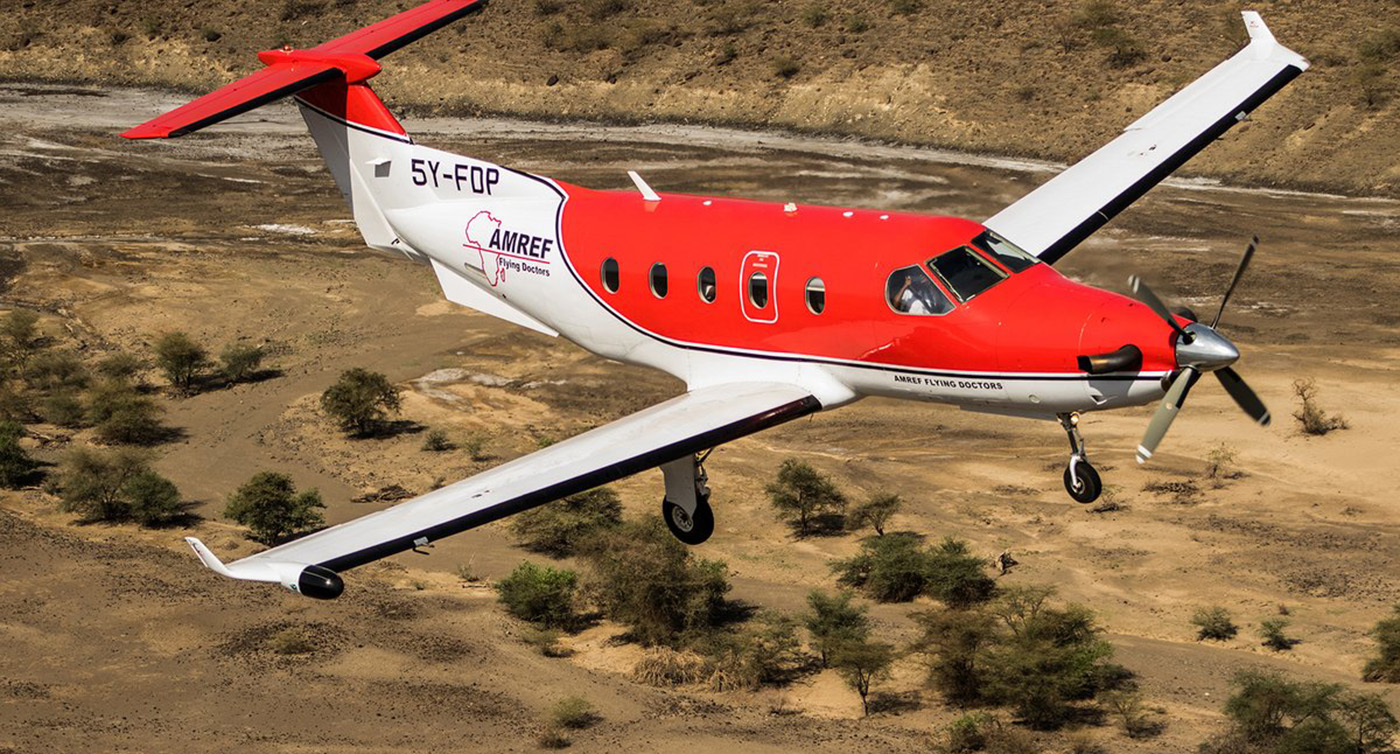Industry voice: Bridging the gap between healthcare and remote communities; air ambulance services in Africa

Air medical services provide a vital lifeline in Africa, but operating across its diverse terrain can present unique challenges. Careful planning and efficient teamwork are the solution, explains Brian Kimani, Line Pilot at AMREF Flying Doctors
In Africa, where vast landscapes, remote regions, and limited healthcare infrastructure pose significant challenges, air medical flying has emerged as a transformative solution for improving healthcare access. This article explores the crucial role it plays, and the challenges associated with operating an air medical service in Africa, and sheds light on the efforts being made to bridge the gap between healthcare and remote communities through the skies.
Across the continent, air medical services have proven to be a vital lifeline, enabling healthcare providers to reach patients in need swiftly and efficiently. With advancements in aircraft technology, telemedicine integration, and specialized training, air medical services are revolutionizing emergency medical response, disaster management, and patient transportation. However, amidst the promising developments, there are formidable obstacles to be navigated.
The risks of unstaffed airstrips
Africa’s vast and diverse geography presents unique challenges for air medical services. Remote areas, dense forests, and difficult terrains make it challenging to access patients quickly and safely. AMREF Flying Doctors operates a varied fleet of aircraft, but the Pilatus PC-12 is the equipment most commonly used on such challenging missions, with capabilities of taking off and landing in 600m dirt strips. Naturally, in this type of operation, the airstrips are unstaffed, posing a range of associated challenges, such as people and livestock crisscrossing the strip, an unmaintained or damaged surface, and day-only operations imposing cut-off times at the expense of patient care. All of this is mitigated by the AMREF crew in conjunction with a very well-oiled operational control center, who are in constant communication from the onset to conclusion of the mission.

Delaying factors
Fuel and technical support are one of the greater challenges in this business when you operate in certain regions, hence proper planning and replanning are key. This may lengthen the mission as you may require more en-route stops or a longer route due to the lack of these services in some countries. This, in turn, drives the cost of the mission up and is felt by our clients.
Extreme weather conditions, such as heavy rains, storms, and high temperatures, can further complicate flight operations and patient transportation. This can delay the mission, forcing crew to break duty on account of the crew duty limitations set in place by the regulator in order to curb fatigue.
In certain regions of Africa, security risks, including political instability, civil unrest, and the presence of armed groups, can pose significant safety challenges for air medical operations. Ensuring the safety and security of medical personnel, patients, and aircraft becomes a critical concern, requiring appropriate risk assessment and mitigation strategies.
Africa’s diverse cultural and linguistic landscape can present communication challenges for air medical operations
Africa’s diverse cultural and linguistic landscape can present communication challenges for air medical operations. Overcoming language barriers and understanding cultural sensitivities while providing care to patients from different backgrounds require effective communication strategies and cultural competency training.
Information is power
Managing and coordinating such an operation in an ever-changing environment requires a lot of careful planning, effective communication, and efficient teamwork. Information is indeed power, and re-evaluating the mission and client profile is key in running a successful outfit to achieve a positive outcome.